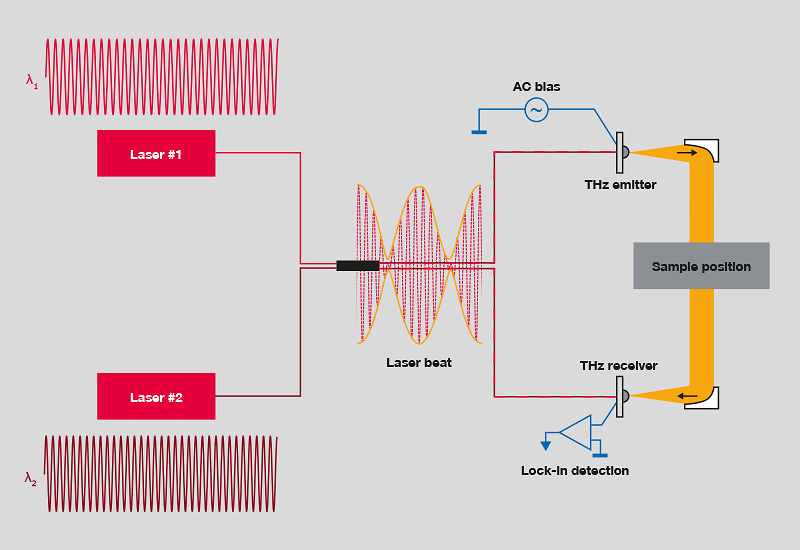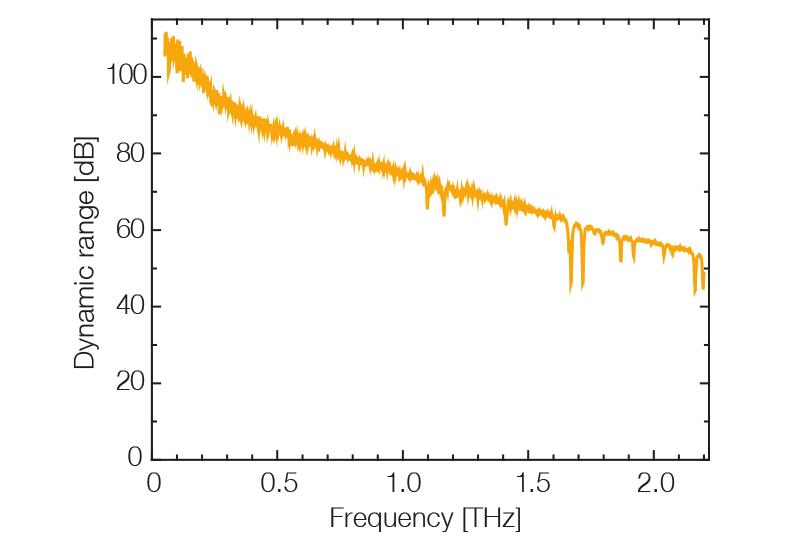cw Terahertz
Frequency-domain terahertz generation
- Optical heterodyning in semiconductor photomixers
- Up to 3 THz bandwidth, up to 100 dB dynamic range
- Tunable DFB diode lasers + GaAs or InGaAs photomixers
- Optional: Phase-modulation with fiber stretchers
Continuous-wave (cw) terahertz radiation is obtained by so-called optical heterodyning in high-bandwidth semiconductors: The output of two cw lasers is converted into terahertz radiation, exactly at the difference frequency of the lasers.
The core component is the “photomixer”, a microscopic metal-semiconductor-metal structure. Near-infrared laser light irradiates this structure at two adjacent frequencies. Applying a bias voltage to the metal electrodes generates a photocurrent that oscillates at the beat frequency. An antenna surrounding the photomixer emits an electromagnetic wave – at the terahertz difference frequency. Benefits of this technique include high resolution, spectral selectivity, and superior dynamic-range values.


State-of-the-art photomixers are based on either GaAs or InGaAs/InP and require laser wavelengths below the semiconductor bandgap (i.e. around 0.8 µm or 1.5 µm, respectively). TOPTICA’s TeraScan systems combine precisely tunable diode lasers, digital control electronics, and latest GaAs or InGaAs photomixer technology.
On the laser side, the systems include distributed-feedback (DFB) diodes. These diodes comprise a grating structure within the active section of the semiconductor, restricting the laser emission to a single longitudinal mode. Thermal tuning of the grating pitch yields very wide continuous frequency scans (typ. > 1000 GHz / diode). By selecting two DFB diodes with appropriate wavelength offset, one can tune the terahertz difference frequency continuously, e.g. from 0 to 2 THz.
